#Jewish ballet
Text
Not related to my convertion but i'm gonna start learning ballet!! 🩰

#ftm jewish#converting to judaism#judaism#reform judaism#transguy#ballet#jewish ballet#i'm gonna be a ballerina#childhood dream coming true#ftm ballerina#transguy ballerina
16 notes
·
View notes
Photo

Alexis Rassine (deceased)
Gender: Male
Sexuality: Gay
DOB: 26 July 1919
RIP: 25 July 1992
Ethnicity: Ashkenazi Jewish
Nationality: Lithuanian/South African/British
Occupation: Ballet dancer
#Alexis Rassine#lgbt history#lgbt#lgbtq#mlm#male#gay#1919#rip#historical#jewish#ashkenazi jewish#Lithuanian#south african#dancer#ballet dancer
92 notes
·
View notes
Note
I think that Belle and Sleeping Beauty are the Disney Princesses who are most like you.


which disney princess am I most like?
#jewish biracial fairy princess me#🩷🩷🩷🩷🩷#sleeping beauty is one of my favourite ballets! i can absolutely see it#friend tag
0 notes
Text
A new documentary tracks the story of a 21-year-old street dancer in Mumbai who found an unlikely mentor in a 70-year-old Israeli ballet master. Read The Forward's review.
0 notes
Text
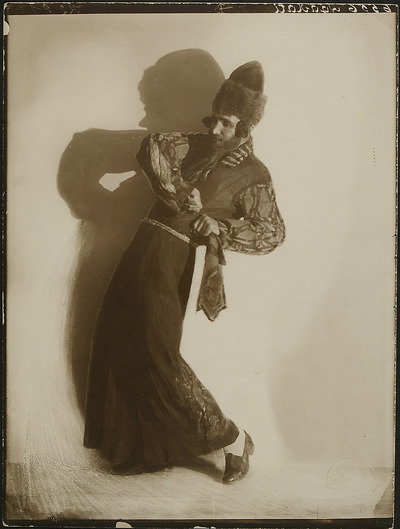
Baruch Agadati dancing as a rabbi in traditional Hasidic garb, late 1920s.
Baruch Kaushansky was born to a Jewish family in Bessarabia in the Russian Empire in 1895. Traveling to Palestine in the early 1900s, he gave himself the name Agadati and began to entertain the local Arabs and Jews with his folk dances and solo ballet recitals. He eventually stayed to become a leading choreographer, painter and film director in Tel Aviv. His bohemian stylings -- one performance featured him openly urinating on the back wall of the stage -- often scandalized the middle class. In 1924, Agadati choreographed a popular Israeli dance known as Hora Agadati. A balletic character folk dance, it mixed the sturdy Dabke of the Palestinian Arabs with Moldavian and Yiddish folklore, which Agadati brought to Tel Aviv from his homeland.
158 notes
·
View notes
Text
(JTA) — As we mark the grim second anniversary of the Ukraine conflict this Shabbat, I’m reminded of a haunting melody I heard in the city of Poltava last month.
I was standing before Sonia Bunina, a plucky 17-year-old, when she opened her mouth to sing when an air raid siren rang out.
I flinched. Not Sonia — she didn’t miss a beat.
“Kol haolam kulo gesher t’zar meod, veha’ikar lo lifached k’lal,” she belted out before seeking shelter. “The whole world is a very narrow bridge, and the most important thing is to have no fear at all.”
Sonia, like so many Jews I know in Ukraine, is many things — determined, grieving, focused — but she’s certainly not cowering.
As she sang those words by Rebbe Nachman of Breslov — the Ukrainian Jewish sage whose followers continue to come by the tens of thousands to his grave in Uman annually — she embodied the prayer’s indomitable spirit.
Sonia and I met outside Poltava’s Hesed, part of the network of Jewish humanitarian hubs founded by my organization — the American Jewish Joint Distribution Committee, or JDC — more than three decades ago. Today they’re a lifeline to tens of thousands of Jews facing loss and strife. Since she was a toddler, Sonia has been attending activities at Hesed — her mother coordinates cultural programs for the elderly, and she connects teen volunteers like herself with isolated seniors, a critical source of comfort these last two years.
These days, traveling to Ukraine feels like a pilgrimage — there’s a pull in my soul to visit family near Lviv, to bear witness to Ukrainian Jewish resilience, and to be inspired by the clarity of purpose that is so palpable there. Since my first trip in 2011, I’ve been eight times. Last year, I wrote about how a year of crisis had transformed the ordinary into the sacred in Ukraine. Now, visiting feels even more essential with the worsening humanitarian situation.
Ukrainian Jews aren’t blasé about these challenges — far from it. Just take the delicate ballet of emotions on their faces when checking their phones during an air alert — contacting loved ones, scrolling through photos of devastation, and analyzing Telegram chats speculating on a given rocket’s make and trajectory.
But life goes on — there’s work to do — and though they’ve lost so much, they refuse to give any more away.
Showing up for each other, whatever it takes, is now baked into their very essence as Jews, and in Ukraine, there are tens of thousands to serve — hungry old women and displaced young families, disabled Holocaust survivors and stunned middle-aged professionals, shocked to now need help when they were once donors and volunteers.
They act fearlessly to ensure their communities make it through this crisis, body and soul intact. Can we expect anything less than boundless creativity from the people who birthed Sholem Aleichem and the Baal Shem Tov?
“These bombings, all these things that are killing people, destroying houses, leaving children homeless … it’s very scary,” Galina Limarenko, an 82-year-old retired nurse, told me in her small bedroom in Berezivka, taking note of the warm blanket, firewood, and other winter supplies my colleagues provided. “Thank God for the Jewish community, which never gives up and always shares even their very last piece of bread.”
I saw that irrepressible spirit again at our Beit Dan JCC in battered Kharkiv — a shapeshifting wellspring of strength just a few dozen kilometers from the eastern border. Shortly after Feb. 24, 2022, the center became a staging ground for truckloads of emergency aid — part of the 800 tons of humanitarian assistance we’ve delivered so far.
A few blocks from missile strikes, it now hosts children’s camps and soulful Shabbat services and operates a “kids hub,” offering academic enrichment to children who haven’t had in-person school for years — robbed of normal childhood by the pandemic and now the ongoing crisis.
And amidst blizzards and blackouts, Beit Dan has also become a “warm hub,” a safe place for beleaguered Jewish Kharkivites to charge their devices and obtain a hot drink and warm meal.
“If you share in our pain, and provide support where it’s needed, I’m forever grateful,” said Nika Simonova, Beit Dan’s program director. “The ability to remain human is the main thing. Done right, I believe that can save the world.”
That’s why we at JDC, aided by a coalition of partners including the Jewish Federations, Claims Conference, and International Fellowship of Christians and Jews, deployed a historic response to this conflict and remain committed to the Jewish future here.
We’re focused on ongoing humanitarian support for more than 41,000 Ukrainian Jews, expanding trauma relief, closing children’s educational gaps, and getting unemployed Jewish community members, among millions of Ukrainians plunged into poverty, back to work.
There is no doubt that the Jewish world is now responding to crises on multiple fronts, including this one, but we have been here so many times before. We must draw strength from our history and from the sure knowledge that this is what we’re built for. Our compassion and commitment, when leveraged with that timeless sense of mutual Jewish responsibility, means we can tackle the challenges we face — and come out on the other side even stronger.
As I walked through Lviv on my last day in Ukraine, I asked my cousin Anna Saprun, a 25-year-old business analyst, how this period has changed her.
“I hate what’s brought me here, but I love who I’ve become,” she said with a fierce and feisty smile. “Nothing scares me anymore. I feel powerful.”
Two years after the conflict began, Ukraine’s Jews are inspired anew each day, resolute in the sure knowledge that they know exactly who they’re working for — each other.
121 notes
·
View notes
Text

Rina Nikova, a Jewish dancer, ballet master, and choreographer performing with Jewish Yemenites in Jerusalem. (1931-1974)
106 notes
·
View notes
Text

Austrian actor Anton Walbrook, circa 1926
Born Adolf Anton Wilhelm Wohlbrück, Walbrook was descended from ten generations of actors, though his father broke with tradition and became a circus clown. He studied with the legendary director Max Reinhardt and built a successful career in both Austrian and German theater and cinema. He changed his name to Anton Walbrook in 1937 when he began to work in English-language films.
With the rise of Hitler and the Anschluss of Austria, Walbrook, who was classified under the Nuremberg Laws as "half-Jewish" (his mother was Jewish, and he was also homosexual), settled in England, where he continued working as a film actor, making a specialty of playing continental Europeans.
Arguably his greatest performance was as the elegant, tyrannical ballet impressario Boris Lermontov, in the legendary British film The Red Shoes (1948).
30 notes
·
View notes
Note
For the oc asks \o/
What's a scent you associate with your OC?
What's a "traditional" or old fashioned hobby your OC has? (Calligraphy, fencing, leatherwork, etc, etc.) How did they pick it up?
What was the main inspiration behind their design?
For anyone you want to talk about! o7
Oh these are fun!! I'll do my best to answer them!!
"What scent do you associate with your OC?"
At some point, I feel like I answered this for Oisín and/or Emil... but I can't remember if I have.
Oisín = smoke and ash
Emil = freshly baked bread and cinnamon
Kingsley = pine trees
René = citris
What's a "traditional" or old hobby your OC has? How did they pick it up?
Oisín - Calligraphy, because @cyanide-latte 's OC Wei Renqiao taught them and its an activity they do together.
Emil - Tatting, embroidery, and mending, because his grandmother taught him.
Kingsley - Wood carving, because if you get bored in the woods, have a knife on your person, and see a lot of dead wood.... well... it was bound to happen.
René - if you don't count classical dance, then I don't actually think they have one.
What was the main inspiration behind their design?
Oisín - the TV monitor design was a combo of wanting to do an object head and a specific visual aesthetic you can find in Harajuku, mixed with a hint of Irish flare. Their headless design came from old Irish/Scottish legends and myths (between what I researched and what my grandpa used to tell me about the dullahan). The design that has a head came from 90s/2000s shoujo.
Emil - Besides the obvious nods to Dame Gothel, cause he's a Gothel expy, I took inspiration from my jewish heritage. Mainly because my entire idea for him as an OC was to combine the original tale of Rapunzel, Into the Woods, and Tangled - but what if Tangled was less antisemitic?
Kingsley - ALRIGHT IM SETTLING THIS NOW--- No. His inspiration did not come from Phantom of the Opera. His inspiration came DIRECTLY from The Chronicles of Prydain which is the source material the Black Cauldron was adapted from. The depiction of the Horned King we see in the book series is VERY DIFFERENT from the 1970s Disney adaptation. And the choice to use the half skull mask for daily wear while the full skull and horned mask for ceremonial wear came from a combination of me not wanting to draw the horns all the time as well as a choice to represent his character growth and development visually, beyond just the scars and tattoos he gains. He's not a Phantom expy- I promise OTL
René - Very easy. Odile from the classical ballet, Swan Lake. They are an Odile expy and in my personal opinion, translating that into a Yana Tosobo grade character design felt extremely easy LOL
Thanks again for asking! These were a lot of fun!!
Prompt
Tag list: @ramshacklerumble @elenauaurs @rainesol @inmateofthemind @thehollowwriter
@cyanide-latte @blithesharem @theleechyskrunkly @starry-night-rose @boopshoops
16 notes
·
View notes
Note
Given your evident love of magneto what are your thoughts on the man who arguably began his more modern interpretations Chris Claremont? I’ve hard a decent amount of criticism on how often he used kitty pride to say the N word.
I think Claremont was wrong for having Kitty say the N-word outright and I think as a non-Black man his decisions to have the word be used and make a direct comparison between the oppression Black people face and the oppression the fictionalized mutants face were misguided.
It's one thing to make an allegory, it's another to make a one-on-one comparison when Claremont himself is not Black. Claremont is Jewish, and therefore his explicit comparison of the oppression mutants face in his universe to antisemitism is something he is at liberty to explore. He does also makes many explicit comparisons to the Holocaust in his runs, and as a Jew I don't really have an issue because he is a Jewish man and the comparisons were made my Magneto, a Jewish character.
This is one of the incidents of Kitty saying the N-word, in Claremont's hit story "God Loves, Man Kills":

The context of this is that Kitty got into a fight with some other teens because they were espousing anti-mutant rhetoric. Stevie Hunter, her ballet teacher, tells her to calm down. Kitty, being a teenager, got fired up at Stevie's passivity, and tries to make a point.
Of course, we as readers know that as a Black woman, Stevie knows from experience to keep her head down, but to Kitty Pryde, a white-passing person who had only discovered her powers (and new marginalized status) mere years before, is not used to this new marginalization. I say "new marginalization" because Kitty has always been a marginalized character even before her mutation, being Jewish. Kitty, especially in the runs under Claremont, is drawn as not just openly Jewish with her Star of David necklace and numerous references to her Jewishness, but also racialized as Jewish with her thick, dark curly hair (a stereotype of Ashkenazi Jews). But as a light-skinned generally white-passing Jew from the suburbs of Chicago, it's likely she didn't experience as much antisemitism as much as Stevie faced antiblackness.
I think the real issue is less of Kitty saying the word but rather in the next panel Stevie saying that she was right to make that comparison. In the X Men universe, the mutants are a marginalized class, but so are Black people. I think Claremont was trying to shift the themes of the X Men narrative as being not just an allegory for the Holocaust, but also for Civil Rights (Indeed, the opening scene of God Loves, Man Kills, is of two Black children being lynched by a religious extremist mob), but he did so rather clumsily by our standards.
The time Kitty did say the N-word intentionally as an insult was in Uncanny X-Men #196:

This exchange occurs after Kitty overhears Phil and his friends plotting against other mutants. She barges in, and they turn on her (they end up knocking her out and kidnapping her). I do not think it was appropriate for Kitty to use the N-word in this way, and I don't think Claremont should have written her as saying such, but in the context it is one marginalized person calling another person a targeted slur, and the other person responding in turn. Not appropriate, but in the scene it is an emotionally charged moment where both sides of the exchange are in the wrong.
The final instance I can think of where Kitty uses the N-word is in conjunction with a bunch of other slurs to give an example. She is giving a speech at a school where one of the students committed suicide because of the anti-mutant bullying he faced. While I did censor the instances of the N-word in the previous two images, I'm not going to do so for this one because it's in conjunction with a bunch of other slurs, and if I censored each one, the context would be lost.

Kitty calls herself a series of slurs and insults (notably, an antisemitic slur. Remember, Kitty is a proud Jew). She then lists off other slurs, which includes the N-word, but also an anti-Latino slur, an anti-Italian slur, an anti-Asian slur, and the F-slur. She also uses "Mutie" again, which is an anti-mutant slur in the Marvel universe. To our modern ears (or rather, eyes), this is inappropriate, but this was published in 1983 and the ideas we have today about not saying slurs even in non-targeted ways weren't the same.
I think Kitty's usage of the N-word (and other slurs) is used to make it obvious to the readers that the mutant narrative is an allegory for other narratives in our world, namely racism, antisemitism, and homophobia, but it isn't done perfectly. If it was a Black mutant character making these comparisons, just like Magneto is a Jewish mutant making direct comparisons to the Holocaust, it might read a bit better. I don't know for sure, and I'm not Black myself, but perhaps then it would be slightly more appropriate. Kitty was written to be a very outspoken character who says things as they are, but it wasn't her place as a non-Black person to make those direct comparisons, even if she herself is marginalized in other ways.
As for Claremont himself........I think he is a legend and despite his controversies, the X Men, and Magneto especially, wouldn't be the icons they are today. Claremont took the X Men from a run-of-the-mill superhero team and Magneto from a run-of-the-mill villain and made them inherently political and an explicit allegory for other issues present in our world. This tradition that Claremont started has only continued with other Marvel writers drawing parallels between queer issues and mutant issues, and fan speculation about parallels with disability rights (which I would love to see tackled in canon). Claremont's contributions to the X Men canon are invaluable, and I loved what he did with Magneto. Is he perfect? Of course not. You'd be hard pressed to find a writer who is. I think he tried to tell a story, and sometimes stumbled just by virtue of his own inexperience with the identities he was trying to depict, and suffered from trying to make too many explicit references to real world events and issues (Which many comic writers in his time struggled with). And, notably, he hasn't continued to make those mistakes in more recent publications, which I think is significant.
[id in alt text]
#marvel comics#chris claremont#racism#antiblackness#n-word mention#slurs#media analysis#critical thinking#media criticism#kitty pryde#x men comics#marvel#nuance#antisemitism
26 notes
·
View notes
Text
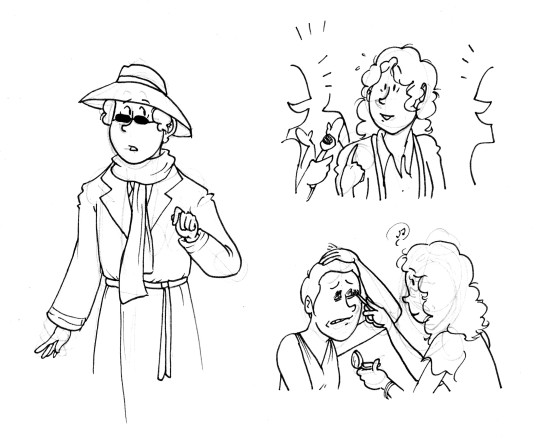

Companion concept art for my collab with @professorcalculusstanaccount (which you can see here)! They needed reference for Marlene Katz's apartment, and then I tried my hand drawing some moments from their concept - her disguise, the finale, and helping give Tintin a makeover.
Extended notes below the cut:
With her apartment, I've always envisioned Marlene living with very kitschy decor. As I said to ProfCal, she's someone who decorates based on sentimentality, rather than keeping to a uniform style, so I tried to make her apartment have little bits and pieces of furniture and decor she's picked up throughout her travels. That doll on the mantle is based on a real Cuban doll I have in my home!

The placement of the evil eye wall ornament was also deliberate. When ProfCal described what they wanted to do with the shootout gif, I thought it would be cool to put in something that's both a sentimental piece of art and symbolic of Marlene's Jewish heritage. The evil eye took the hit for her in that scene.
Story planning assistance was also fun to do, since it ties into a lot of stuff I was planning for The Shattered Emblem...after the events of The Blue Lotus, Rastapopoulos goes to jail, but gets a lighter sentence after making a few bribes. He begins to worm his way into the more criminally-inclined celebrity class, mainly to rebuild connections, especially ones who can help him bend the law better this time. He even crosses paths with Castafiore thanks to his new links to the elites, but the one thing tethering him to his "old" life pre-arrest is Marlene. She's never given up hope on him, even after he got tried for running an actual fucking mob, but Rastapopoulos has only seen her as an air-headed bimbo, a product of being rich and famous and not someone who can actively make him money, so he unceremoniously dumps her.
Marlene is shattered. She goes back to America and she starts teaching ballet to kids in the Bronx, since dance was what she first got into stage productions for. Things actually go really well, and Marlene realizes she likes her new life and being self-sustaining. However, she still misses being in films, even though she's scared to really get back into the industry in case she sees him again. But then he comes to Marlene, now sporting different, ridiculous facial hair and claiming to be a businessman from Gorgonzola, like a character in a bad screenplay. Every nerve in Marlene refuses to trust Rastapopoulos now...it's not because he looks different, but something seems to have warped inside him. This isn't her "Robbie" anymore. She breathes a sigh of relief when all the newspapers declare the Marquis drowned during a standoff in the Red Sea.
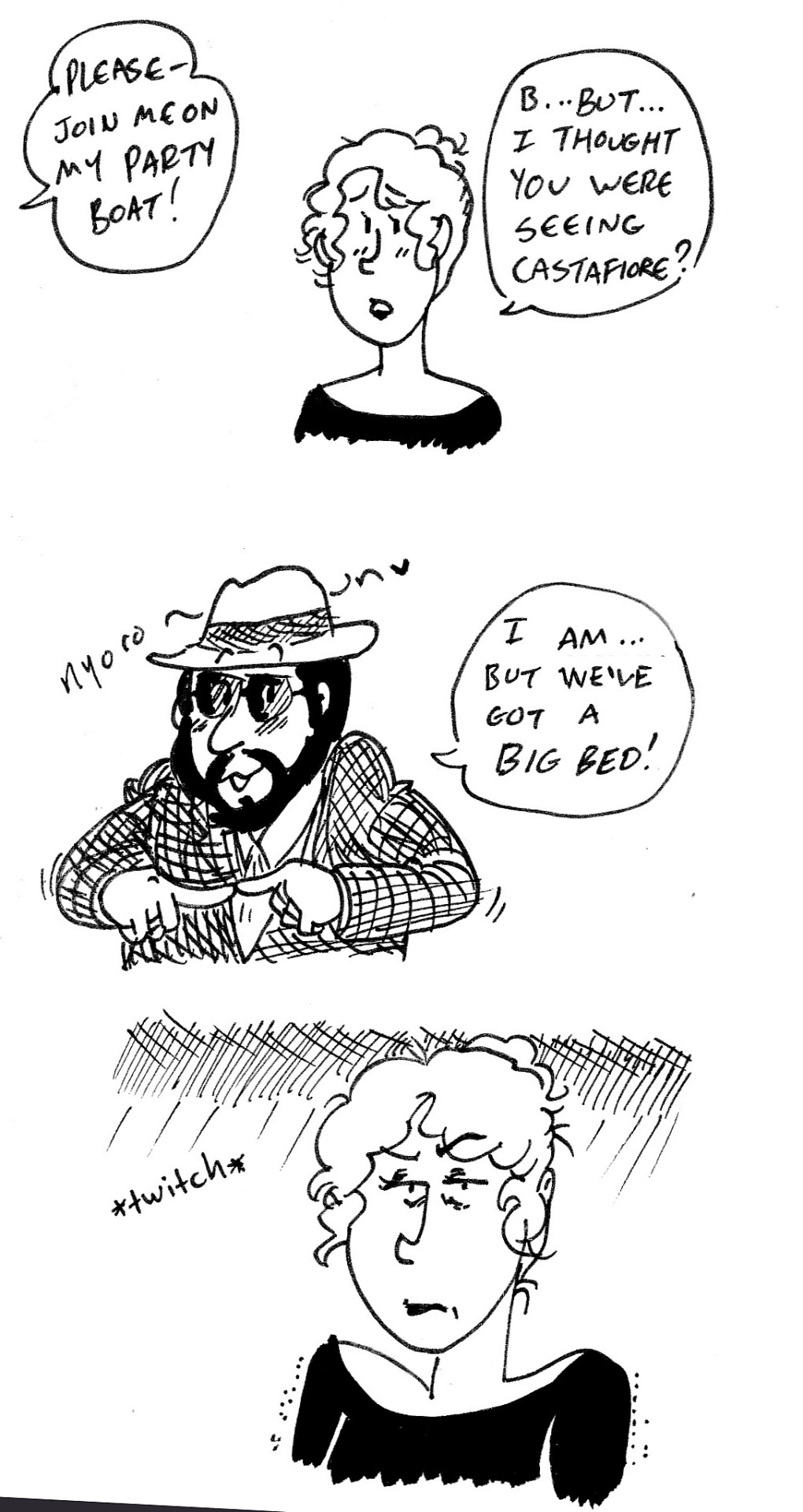
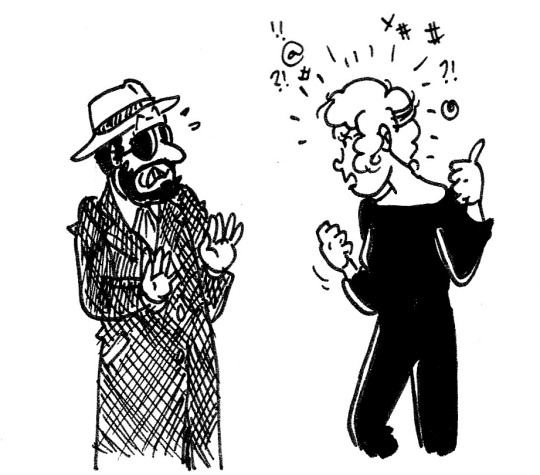
(This is a way sillier version of this scene versus the one in my drafts)
And then, leading up to The Golden Palm - Marlene begins to realize she saw a lot of suspicious faces and activities during her time at Cosmos Pictures. It was all so mundane and inconspicuous that she never brought it up, and Rastapopoulos never seemed to hide anything from her, since he assumed - again - that she was an airhead and not to worry about her noticing. But Marlene was witness to a lot of connections that the people involved would kill to keep hidden...
For people new to my blog, this is the character Marlene is adapted from! She is super minor to the plot, but back in 2020 I kept getting ideas for what this random woman's story was, and the ball kept rolling from there:
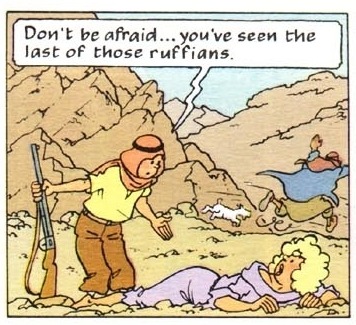

Once again, huge thanks to ProfCal for inviting me to collab with them! It was a ton of fun, and also super humbling to know how helpful my blog has been for others over the years. To think that all of this started after a few shitposts about mobsters! Tintin belongs to the fans, and I'm so glad to have been part of a fan project like this!
169 notes
·
View notes
Note
I'll never forget the time my highschool class went to the Jewish holocaust museum.
One of the historians (idk if they were Jewish) there opened their talk quoting a young woman's description of her father who died in the war. She emphasised how kind and loving, how he was always gentle with her and would attend her ballet classes. He loved his work and loved all people and was by all accounts (the historian included some other quotes from friends and family ect) an incredibly loving father. She goes on to say how his life was cut short by evil monsters, how he had so much more to offer the world and how she will always remember him as her hero.
The historian then revealed that the man was Reinhard Heydrich aka the primary architect for the final solution, right hand man to himmler and had complete control over the Einsatzgruppen (death squads).
The historian then asked us if we thought he was a monster. Of course we all said yes but he challenged us and asked before we knew who the man's name was did we think he was a monster? Would anyone who only saw this side of him think he was a monster? Did Reinhard Heydrich's daughters description fit what we thought a nazi was? Did it fit any particular stereotype of an 'evil' person?
The point was he said that we need to be very careful when describing Nazis as evil monsters. Because that conjures up images of clearly defined traits that everyone can immediately identify (eg hooked nose, black skin ect (his words not mine).
The Nazis were humans. Thinking of them as some other species that are distinct from humanity is very very dangerous because it implies that WE are incapable of committing similar acts or at least creating environments where such acts can happen.
Idk its really really stuck with me over the years.
Antis seem to act like this in terms of pedos if that makes sense?
.
#mod erin#ask#just anti things#nazi mention#pedophillia mention#posted without comment#ask to tag#holocaust mention#‘
88 notes
·
View notes
Note
Hey, how would you guys feel if someone was to actually write a fanfic about Saph/Katya/Brad on AO3? Would that be a bit creepy or would you be cool with it? Cause I've got a couple of ideas but just felt like I should ask for someone's opinion first, lol. Loving the blog by the way <3
uh. its a bit creepy, and im not gonna speak for saph and brad and what they are comfortable with.
im cool w it as long as u A) send it to me ( @ainti-pretty )and B) don't write me in smut or anything sexy, im serious about that one C) you have to send the link off anon.
listen guys write what u want abt me just like dont be a total creep and write me in porn.
i cant stop anyone, but i will ask you not to write me in any sexy way.
if u want to put me into twilight? go ham. if u wanna decapitate me in the french revolution and write a 100k fic on my emotions right before im executed? fuck yeah, just make it well researched, and dont make me a royalist cuz like fuck the king.
here are some important things for u to know if u put me in fanfic:
im bisexual and trans.
im a (former) ballet dancer whos played a million sport.
im a history major who likes law.
im jewish (but not super observant...sorry grandma)
i enjoy twilight.
if i were a furry my sona would be a black cat.
i could fix power from csm. do what u will w this information.
DO NOT SHIP ME WITH SAPH OR BRAD.
THIS LIST IS FOR ME AND ONLY ME. I DONT SPEAK FOR SAPH OR BRAD.
i dont fucking feel comfortable being written in sexy situations dont write me in porn or ill find u and hunt you down.
179 notes
·
View notes
Text
can't remember where i saw the post reccing Juniper and Thorn by Ava Reid, but they were so right.
Juniper and Thorn is set in the fantasy Russia-esque city of Oblya, in the midst of change as it industrializes and draws in immigrant populations. The protagonist, Marlinchen, is the youngest daughter of the last wizard in Oblya, a man cursed to be dissatisfied with everything in his life.
It's very tightly written -- I could tell within the first few pages that this was a book to pay close attention to. Elements introduced in the first few chapters remained relevant throughout, from the beauty of the eldest sister Undine to the spiny-tailed monster under Marlinchen's bed.
Like a good Grimm fairy tale, Juniper and Thorn uses the fantastic to underscore the real. Marlinchen doesn't just live under her abusive father's thumb; she lives under his abusive, magical thumb, with all the power he can wield to control her life. His curse drives the central conflicts of the story, feeding into his consuming hunger, his relentless desire for money, his anger at his daughters, his anger with the changing world that no longer respects his magical gifts.
Juniper and Thorn contains a romance that I would compare, if anything, to the fairy-tale, Cinderella-esque story of escaping family abuse coupled with the realism that shines through the entire novel. Sevastyan, the male romantic lead, is the youngest principal dancer in the local ballet company, but he's also an ethnic minority (if Oblya is "fantasy Russia," the Yehuli people can be read as "fantasy Jewish") in an unfamiliar city and victim to abuses of a different kind. He's drawn to Marlinchen for reasons that similarly thread the line between fantasy and realism, and he's both an archetype to her (emphasized by his heroic role in the ballet) and just a hurt, lonely man who likes her.
Anyone with a close familiarity with stories is likely to be able to guess the twist, if you're paying attention, but it's a credit to Reid that even after I figured out what was coming, enough story elements were left open that I was never quite sure how it was happening until I was almost upon the reveal. When the last piece clicked into place, I actually said aloud, "Oh, there it is!" It was such a delight, like being led blindfolded by the hand and being able to trust my guide to deliver me through the woods.
Reid's world-building also stands out. It lands in perfect synchrony with the plot; the industrialization of Oblya caused Marlinchen's father to lose his standing as a great wizard, keeps their situation on the verge of poverty, and brings the temptations of the outside world that put the daughters in conflict with their wizard father. Juniper and Thorn spends only just enough time on the worldbuilding to paint a vivid portrait of local life and imply the scope of the world beyond Oblya's gridiron streets. Reid neatly avoids the temptation to over-design her world with more details than the story can use; the entire tale occurs in Oblya, so she sticks close to Oblya, to great effect.
If there's any quibble I have with Juniper and Thorn, it's in the overuse of simile in the early chapters. It's clearly meant to establish the gothic atmosphere, with striking metaphor that calls up gory or spooky symbols, but early on it seems that every other line contains such a line. While each simile and metaphor has the intended effect, taken all together they can feel over-saturated and lose their impact. This issue lightens up as the story continues, and eventually these similes become more clearly defined as part of Marlinchen's own grim and violent thoughts.
A few warnings, however; if you're sensitive to depictions of sex, gore, sexual assault, or abuse, this book may not be for you. All four appear throughout this book, and while the depictions vary in explicitness and intensity, Reid doesn't shy away from their effect on Marlinchen's psyche.
All in all, an excellent adult fantasy fairy tale! I would highly recommend this book to fans of dark fiction, especially dark fantasy, and those seeking a fairy tale with more bite.
69 notes
·
View notes
Text
GUYS GALS AND NON-BINARY PALS I WELCOME YOU TO ‘WHAT I HEADCANON TALIA WOULD WEAR AT HER WEDDING TO BRUCE’!
Disclaimer I am neither Chinese nor Jewish so if there are any Chinese/Jewish fans who want me to change something or correct me on anything feel free to do so! (Ngl gonna make some of it kinda vague since I’m hopping between websites on my phone)
This started as just what Talia would wear to the wedding since as per tradition for those who can afford it Arab brides can have three dresses. But after a bit I got frusterated when she should wear what and ultimately decided to do a chronological order of the wedding. (Not including the engagement party, dinner party, or anything else. Just the night before and forward.)
shoutout to @daminette-56 for being the reason I planned this and to @immortaldino for being the reason I remembered to do this!
The night before is universally a bath night for the bride and groom. Both go to a Hammam (bath house) to get cleaned up and scrubbed down making sure to use pomelo leaves along side their respective choices of scents.
They then get into red and gold pajamas and slippers and at the right hour, the hair ceremony can begin. They sit in front of a window as a relative of good fortune combs their hair four times with blessings. They struggled to find a relative of good fortune but thankfully Talia was able to reach out to relatives on her mom’s side to help out. They were confused at first but realizing her and her fiancé’s bad record with parents decided to help out. (Had to keep a tight lip about the league). Once the ceremony is done and the red yarn and leaves are tied on the bride, the separate families eat and while waiting for the candles and joss sticks to die out the henna ceremony can begin.
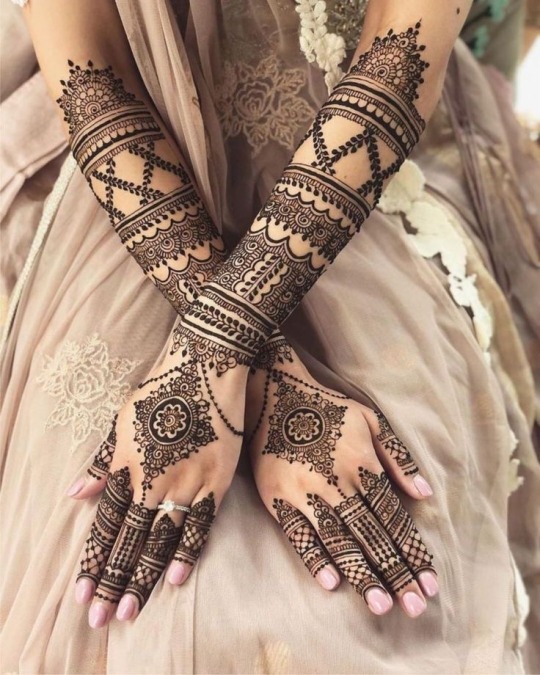
After the candle has burned out and they wrap their henna to go to sleep they go to bed and the groom keeps his ribbon and leaves in his pocket for good fortune.
It’s the morning of the day and Talia wakes up early af to get ready. Meanwhile Bruce wakes up and has to take on ‘groom challenges’ trials set for him such as quizzing on Talia (he nails it) food tolerance challenges (just barely passes the spicy test) and finally giving packets of money to Talia’s bridesmaids so he can enter the room where Talia is to find her shoes. Ras made this challenge especially hard since he wasn’t allowed to go all out on the challenges but Bruce being the world’s greatest detective figures it out which brings us to Talia’s first outfit.

And ofc the shoes

After the shoes are found and placed on Talia Bruce carries her over to the tea ceremony. A red tea set with a Double Happiness symbol is used for the tea ceremony, where black tea is sweetened with dried longans, lotus seeds, and red dates. The tea is poured and distributed to paternal parents first, then paternal relatives, then maternal parents to maternal relatives. Afterwards Ras and Alfred give red envelopes of either money or gold.
Bruce: Alfred I couldn’t possibly-
Alfred: Consider it as a future investment for the property damage your future child will inflict Master Bruce.
Bruce: Fair enough.
After the tea ceremony Talia changes and they head to the next area of the wedding. Here Talia dons a white dress and a traditional Arab wedding cloak.
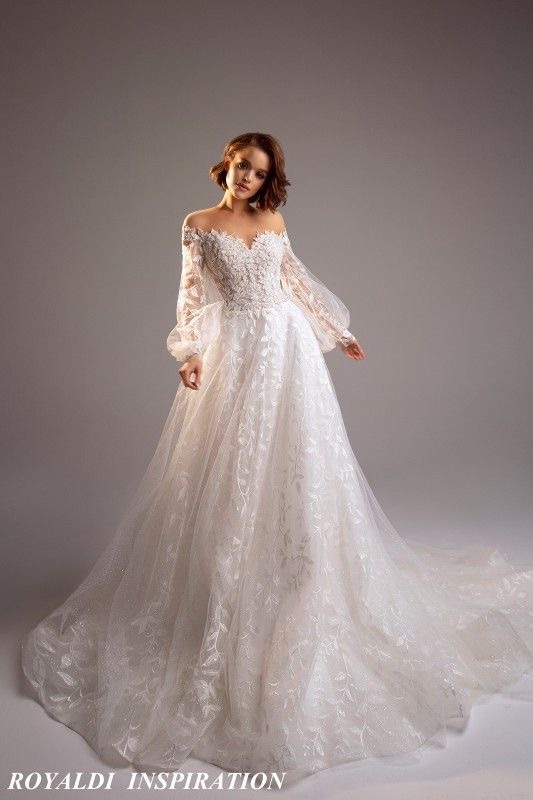


Its here that the Ketubah is read and signed in front of a small audience afterwards Bruce takes off Talia’s cloak and replaces it with a veil for Bedeken. (Apologies if I used the term incorrectly 😅)
Then Bruce walks down the isle towards the chuppa with Alfred, his groomsmen including Clark, Kate, Dr. Elliot (prior to Hush), some relatives and coworkers, and oddly enough both two face and Harley Quinn with Dick as the begrudged flower boy. Then, Talia follows suite with Ras and her bridesmaids. Nyssa, Amla, her closets friends from studying in Cairo and her ballet years, Lois because of Clark, and oddly Selina. They had a mutual agreement that if Selina stole anything her hand would get chopped off and Selina wouldn’t so long as she was in the wedding. Talia figured she could use the extra security and had her as a bridesmaid. Ivy is also a bridesmaid since she and the Al Ghuls tend to plot to save the earth together. (Hence Harley wanting to join)
They exchange vows, have Talia circle Bruce three times, exchange rings, have the seven blessings performed, and then Talia pulls back the veil and Bruce breaks the glass with people cheering.
After that it’s Yichud around lunchtime. Talia and Bruce have a moment to themselves and share a meal in calming silence. They talk for a bit and cry at the fact that their mom/parents couldn’t see this ceremony. They then get their parents (AKA Alfred and Ras) so they can legalize the marriage.
After freshening up it’s time for the reception. Aka, PARTY TIME!!! And Talia’s outfit.
outfit

Shoes
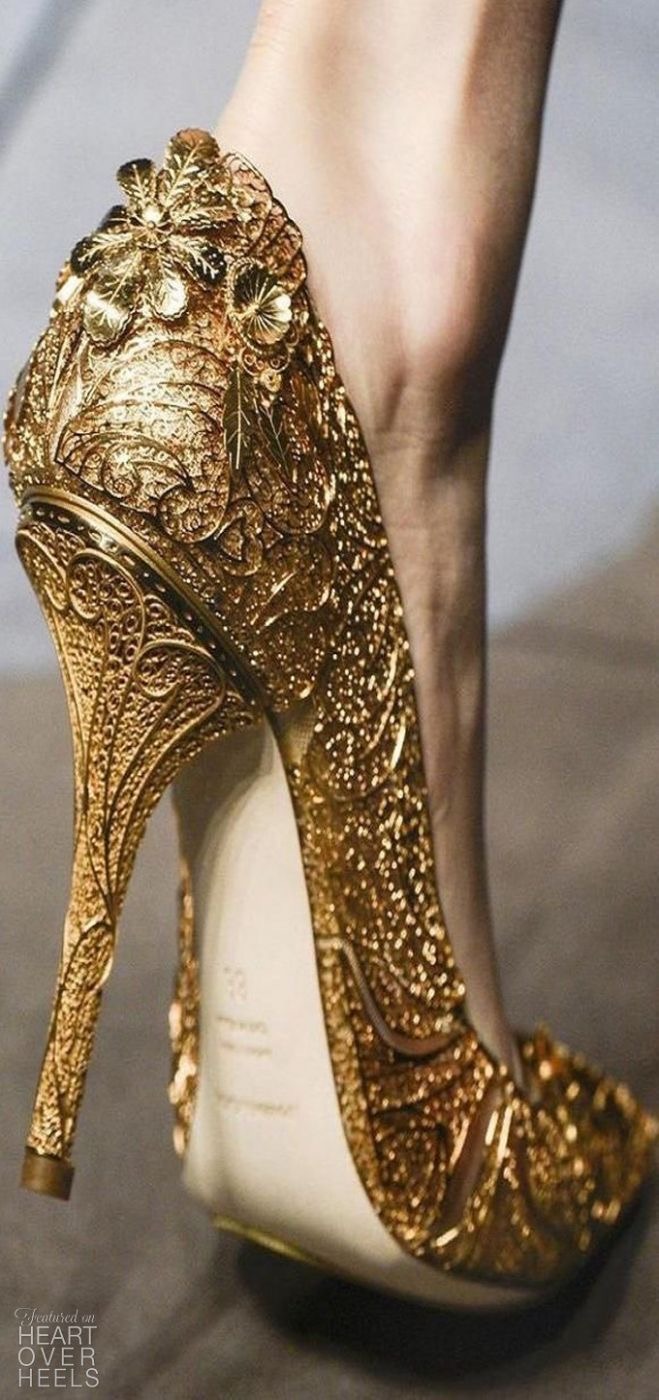
Makeup

Zaffee is their offical entrance as husband and wife with a drummer group following them and you can hear the ladies zaghrouta. The party is officially in full swing and the dancing begins. Naturally Talia leads the dabke but Bruce is no slacker and has no trouble keeping up. How does his wife dance in heels he doesn’t know but deeply admires. It’s a fun night of celebration and dinner is a huge feast of a buffet with different foods from all over the world. At the end of the night (basically 1-3 am) Talia is back in her white dress they dance and it’s the final dance called Hora where Talia and Bruce are lifted in their chairs while holding a kerchief. Afterwards, they’re cutting the cake with a sword (as per Arab tradition). Talia puts back on the cape, and the Newlyweds say goodbye to guests as they drive away in a car wrapped with flowers and a procession follows them honking horns and playing music. They make it to the airport and say goodbye to close family and go off on their honeymoon where a marriage bed made by the fortunate relative is there waiting for them.
They crash and fall asleep immediately.
I’m tired have fun and good night.
here’s Talia’s wedding ring btw. Comes in two for practical reasons idk.

Here is Bruce’s btw

#brutalia#talia al ghul#bruce wayne#brutalia wedding#arab talia al ghul#chinese talia al ghul#jewish bruce wayne#sorry for mistakes#im tired#arab#arab weddings#ras al ghul
51 notes
·
View notes
Text
Tudors OT3 Verse In Universe Media
I wanted to make a masterpost of the in universe media if only for myself. This is very much a work in progress and feel free to ask questions about them and I’ll do my best (I know more about some than others).
TV
Mistress Fishers Murder Mysteries: So @nocompromise-noregrets and I are batting this one back and forth - it guest stars Lee Pace as Thomas Cromwell, Luke Evans as Henry VIII and Cynthia Addai Robinson as Queen Anne Boleyn
Crowned: this universes version of The Crown, though it’s a very very different royal family (though there is still an abdication). Like as in functional, productive and loving (I mean there’s still some Dysfunction but that’s actually mostly external).
The Terror: So @lemonsharks and I came up with a series about the unauthorised and definitely punished/failed (the fact that they were jailed when they returned kicked off the English Civil War in this universe) attempt to colonise what we call the USA. And I just realised it’s the 1600s: The Terror. In universe a very young James Frain is in it to be pretty, be woobified and die prettily after being whumped. Restorationists (these guys suck) think this show is a depiction of Noble Manly Men Doing Noble Manly Things. No one else thinks so (I think James plays a young Jewish boy who was kidnapped and essentially used as bait :/).
Oxford Mysteries: this is another one @nocompromise-noregrets and I have batted about that also co-stars Luke Evans as Indira Vamira’s Emotional Support Pretty Sidekick (she’s the Professor from a noble and old money family).
Bridgerton
My Lady Jane
The Welles Brothers
Becoming Elizabeth
The Scarlet Pimpernel Show
The Tudors (OBVS ;)): except there’s a sequel show called The Tudors: Golden World or similar.
Books
Tolkien (still exists)
Grishaverse (OH MY GOSH IDEK WHAT IT LOOKS LIKE BUT)
Theatre
Henry VIII: LOOKS SO DIFFERENT. I mean Shakespeare in general does but.
There’s a whole bunch of ballets about the Triad I know it.
9 notes
·
View notes